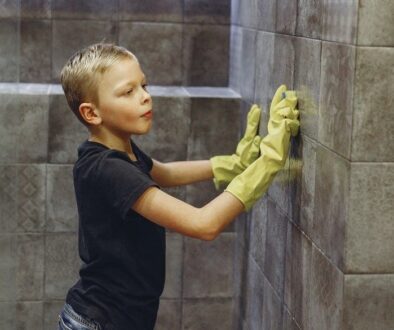12 Essential Spring Gardening Tips
*Read the original article here

It’s chore time! Stepping back into the garden after a long, harsh winter can be overwhelming, but it is also a time of relief. Even with a winter chill still in the air, there are plenty of tasks to start handling now if you want to get your garden in party-ready shape by the time the temperatures rise.
Big believers that gardening should add joy-not stress-to your life, we’ve come up with some tasks to get you reacquainted with your outdoor space. It can be tackled bit-by-bit as you have time (or delegated to members of your household who need an outdoor activity). Spring is a fabulous time to assess damage from winter, fix tools, fill in holes in the landscape, tend to your lawn, perform essential pruning, make new beds, plant from bare-root or container-grown plants, feed everything, begin composting, be kind to the birds, add a layer of much, and tune up your drip system.
Sounds like a lot, but if you move through this list and check things off one-by-one, your garden will be the envy of your neighbors-not to mention your favorite place to put your feet up-in no time at all. A few words to the wise: Walking on or digging in soil when it is still too frozen and wet may compact it, and plant roots need soil to live their best lives. So, if the ground is still too hard or fully saturated with water, be patient.
Survey the Yard
First, look up and assess the trees. Make note of tree limbs that should be removed or cabled, especially those that overhang structures. Hire an arborist to maintain large trees. Next, assess the mid-level. Cut down last year’s perennial foliage, and toss it into the compost pile. Then, the ground plane: Rake mulch from beds planted with bulbs before foliage appears, and refresh mulch in other planting areas after soil warms. Lastly, give a good once-over to all your hardscaped areas: Check fences, steps, and pathways for disrepair caused by freezing and thawing.
Tune Up Tools
In case you didn’t store them properly for winter, give your tools some attention so they’re in good shape when it’s time to work. Bypass pruners benefit from a sharpening. Wooden handles benefit from being cleaned, sanded, and massaged with linseed oil. Make note of what is missing, and order tools for the new growing season.
Got Gaps?
Choose new plants for any parts of the garden that feel bare. Order perennials, trees, and shrubs for spring planting. People don’t often realize that nurseries are happy to special order varieties you’re after that they might not otherwise have in stock.
Refresh the Lawn
If you’ve got grass, spring is an important time to turn your attention to your turf. Send the mower and leaf blower for servicing, or if you have the right tools, sharpen the mower blades yourself. Refill your mower with oil, install fresh spark plugs, and lubricate moving parts if necessary. Clear the lawn of winter debris and look for areas that need reseeding before mowing.
Prune Shrubs
Remove dead, damaged, and diseased branches from woody plants. Thin and trim summer-blooming shrubs such as butterfly bush, hydrangea, and most roses, except for old-fashioned once bloomers. Prune cold-damaged wood after plants resume spring growth. Prune spring-blooming shrubs and trees after flowering.
Prepare New Beds
It’s entirely possible to create a new planting bed where one has not previously existed. What’s most important is to dig the soil, adding oxygen and relieving compaction, and then adding amendments-like compost-that will jumpstart the creation of a rich, living soil. Clear the planting area as soon as soil can be worked, removing sod or weeds and debris. Spread a 4-inch layer of compost or well-rotted manure and any amendments over soil, and cultivate it to a depth of 10 to 12 inches with a spading fork. Rake it smooth before planting.
Plant from Bare-Root
Though it can be intimidating, planting from bare-root (meaning plants come to you dormant, not in a soil-filled container) takes full advantage of the best planting time for many plants, including fruit trees, roses, hostas, and daylilies. Choose a cool, cloudy day if possible.
Plant Container-Grown Plants
Transplant container garden plants anytime during the growing season except during the heat of midsummer; be sure to water them thoroughly before and after they go in the ground. Early spring crops include seeds of cool-season flowers like sweet peas, poppies, and calendula, and vegetables such as lettuce, parsley, and spinach.
Fertilize
Your garden is waking up, and it’ll appreciate a little fuel. Apply balanced fertilizer (the numbers on the container should read 6-6-6 or 8-8-8) or fish emulsion around trees and shrubs when new growth appears. Spread high-acid fertilizer and pine-needle mulch around acid-loving shrubs like azaleas, camellias, blueberries, or citrus. Begin fertilizing perennials when active growth resumes.
Start a Compost Pile
Start a compost pile, or use a compost bin, if you don’t have one already. Begin by collecting plant debris and leaves raked up from the garden. Find equal amounts “brown” (carbon-rich) materials like dried leaves and straw and “green” (nitrogen-rich) materials like grass clippings and weeds. Chop these up first to speed decomposition. There are two main approaches to backyard composting. A “hot pile” is built all at once with alternating layers of greens and browns. It’s turned regularly, not added to, and provides a finished result in just a few months. A “cold pile,” on the other hand, is added to regularly and not turned. Finished compost takes longer to form and is usually scraped out from the bottom of the pile.
Clean Bird Feeders and Baths
If you have already made yourself a welcoming spot for your local feathered friends, now is a great time to give your feeders a refresh. Disinfect the feeders by scrubbing with weak bleach solution (1/4 cup bleach: 2 gallons warm water). Rinse and dry the feeders thoroughly before refilling them. Scrub birdbaths with bleach solution, then rinse them thoroughly and refill, changing water weekly. Clean birdbaths and feeders regularly throughout the season. If you’re new to that bird life, even a plant saucer filled with water and cleaned regularly is usually enough to draw in some new friends.
When in Doubt, Mulch
Possibly the single easiest thing you can do from both a functional and aesthetic point of view is to give the garden a fresh layer of mulch. A several-inch-thick layer of your favorite mulch, say wood chips, straw, even finished compost, gives everything a clean, tidied-up look while helping to suppress weeds and retain moisture.



